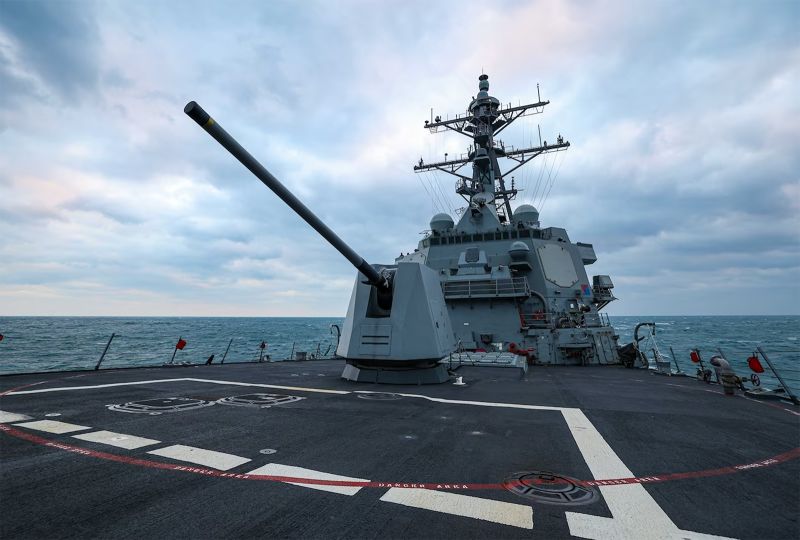
Taiwan Protests Against China's Adjustment of Civil Aviation Flight Routes

Taiwan has raised objections to China's recent adjustment of civil aviation flight routes, which may lead to civilian aircraft flying closer to the sensitive Taiwan Strait median line. This move has raised concerns about aviation safety and aerial defense for Taipei.
The Controversial Adjustment
In a recent development, Taiwan has raised strong objections to China's unilateral adjustment of civil aviation flight routes. This adjustment could potentially lead to civilian aircraft flying closer to the sensitive Taiwan Strait median line, adding pressure on Taipei in terms of aviation safety and aerial defense.
The Arleigh Burke-class guided-missile destroyer USS John Finn (DDG 113) conducts routine operations in the East China Sea, on January 24, 2024.
The Civil Aviation Administration of China announced the cancellation of a 'veer-off measure' for all southbound flights operating on the M503 flight route. This route lies just west of the median line, an informal demarcation point that Beijing does not recognize but has largely respected until recently. The cancellation means that southbound flights will no longer need to veer off six nautical miles to the west from the designated route, bringing the aircraft closer to the median line and the Taipei Flight Information Region.
Additionally, China will start operating two ancillary routes connecting M503 with the cities of Fuzhou and Xiamen in Fujian province. Taipei has expressed concerns that this could impact the safety of civilian aircraft flying in and out of Matsu and Kinmen, two outlying Taipei-controlled islands close to the shores of China.
Taiwan's Response
In response to China's decision, Taiwan's Civil Aviation Administration has expressed deep regret and firm protest. The Mainland Affairs Council (MAC), Taiwan's China policymaking agency, has called the attempt 'a blatant neglect of aviation safety and a show of disrespect for Taiwan.' The MAC has also stated that China's move deliberately masks its ill political and possibly military motive against Taiwan in the name of civil aviation, potentially altering the status quo across the Taiwan Strait.
It is important to note that China claims Taiwan as its territory, despite never having controlled it. The ruling Communist Party of China has spent decades trying to isolate Taiwan diplomatically. In 2015, China unilaterally declared the operation of the M503 route, prompting protests from Taipei. After negotiations, Beijing agreed to move the route six nautical miles to the west of its original path at the time.
The median line dividing China and Taiwan has been a tacit understanding between both sides, not bound by any legal pact. Beijing has never formally recognized the existence of such a line and has recently increased military pressure on the self-ruled island by sending military jets across the line on a near-daily basis.
Conclusion
The recent developments regarding the adjustment of civil aviation flight routes by China and Taiwan's strong objections highlight the ongoing tensions and complexities in the region. The delicate balance of power, territorial disputes, and diplomatic maneuvering continue to shape the dynamics between China and Taiwan. The implications of these developments on aviation safety, national security, and regional stability are significant and warrant close attention from the international community.














